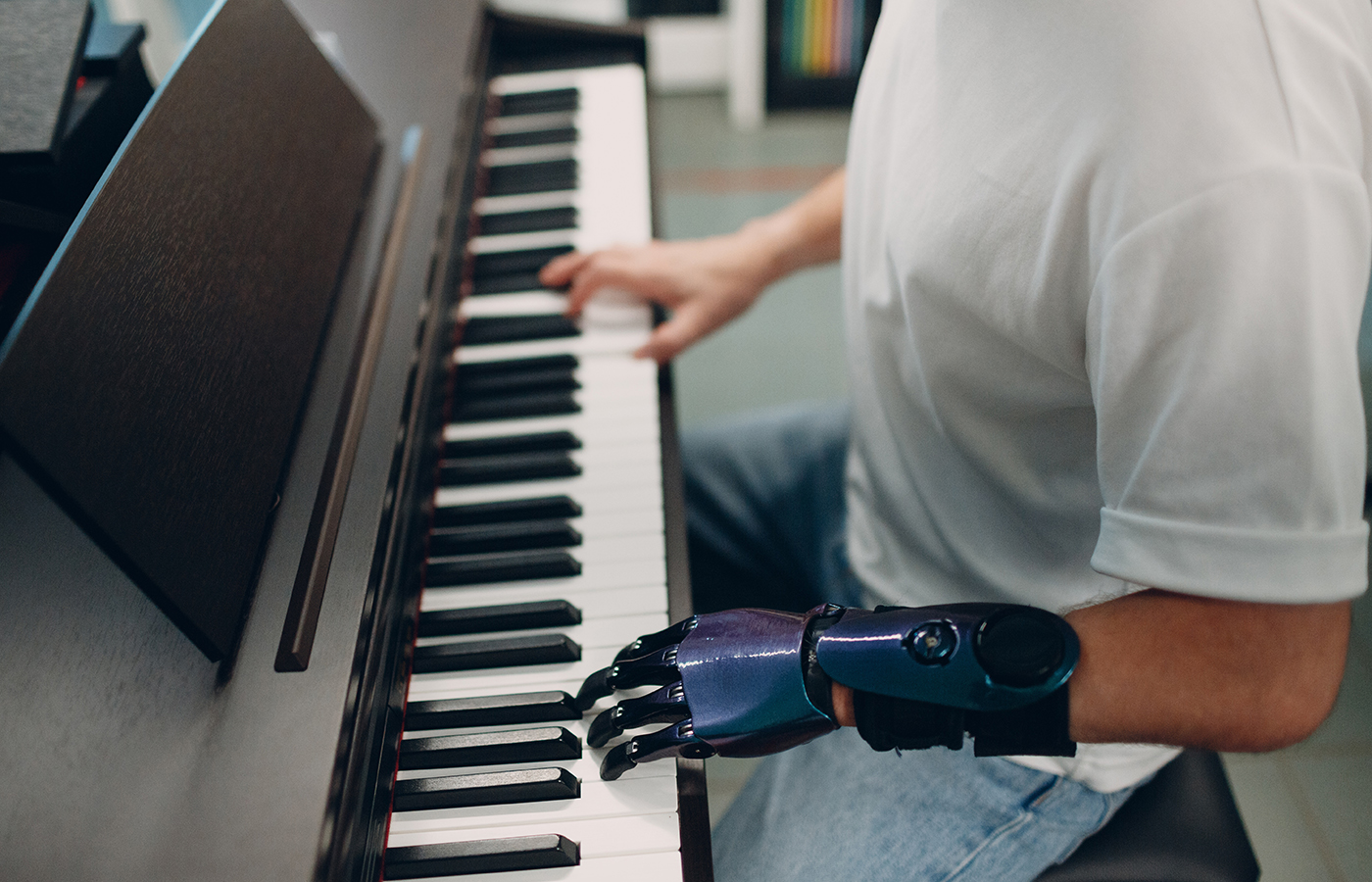Only a few studies have investigated the changes in the spectral characteristics of the surface electromyographic (sEMG) signal that are induced by neuromuscular modifications following a stroke. Also, little has been done to identify whether there is a relation between the sEMG power spectrum and the muscle contraction force in stroke survivors. The Sensory Motor Performance Program at the Rehabilitation Institute of Chicago (RIC) and Northwestern University used a Delsys dEMG™ System to answer these questions and to better access neuromuscular changes in post-stroke patients1.
The Delsys dEMG™ System was used to record sEMG signals from the first dorsal interosseous (FDI) muscle in the paretic and contralateral side of 14 stroke survivors. The 5-pin Delsys dEMG™ sensor (Fig. 1) allowed to acquire four channels of sEMG signal, sampled at 20 kHz and filtered between 20-2000 Hz, while subjects performed voluntary isometric abduction of the index finger to contract the FDI muscle. The force levels investigated ranged from 30% to 70% of the subject’s maximum voluntary contraction force of the paretic side. A fiberglass cast (Fig. 2) immobilized the subject’s index finger to contract the FDI muscle isometrically. Power spectral analysis and a Linear Mixed Model were used to identify changes in the spectral characteristics of the sEMG signal with stroke, and the relation between the sEMG spectral parameters and the muscle contraction force.
The main finding of the study is that different sEMG power spectrum distributions were observed in paretic and contralateral muscles of stroke subjects. The mean power frequency was significantly lower in the paretic side than in the contralateral side at matched contraction levels for the majority of the subjects (9 out of 14). Authors suggest that this reduction can be attributed to different factors such as increased motor unit synchronization, impairments in motor control properties, loss of large motor units and atrophy of muscle fibers.
These results indicate the importance and usefulness of sEMG signals, and in this case of sEMG power spectral analysis, to assess and investigate neural and muscular changes in stroke survivors.




